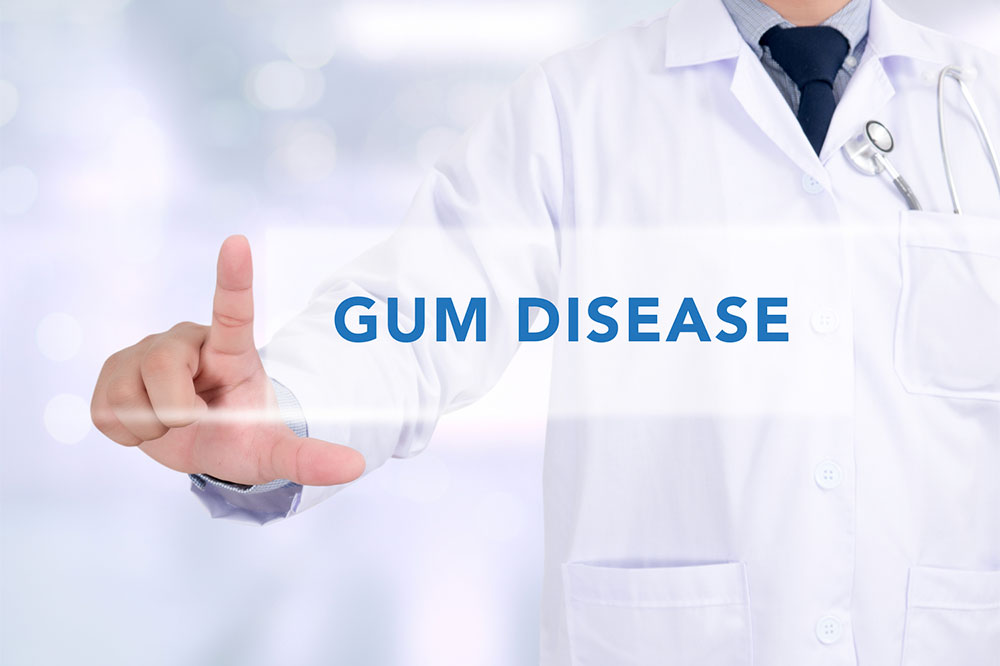Gum Disease – Symptoms and Remedies
Many people often notice blood in the sink when brushing their teeth. Well, bleeding is one of the earliest indicators of gum disease. The mild form is known as gingivitis, and mainly the gums are affected by this disease. The infection could penetrate one’s bone and extend past the gum line. It has been demonstrated that periodontitis and gingivitis increase one’s risk of developing diabetes, cardiovascular disease, osteoporosis, pneumonia, or even cancer.

Symptoms of gum disease
Understanding the gum disease symptoms helps locate and address the issue before it worsens. One of the first indications that the gums require treatment is red, inflamed gums. Gum illnesses often start with inflammation around the gum line.
Foul breath
Millions of bacteria are present in the warm and moist environment in one’s mouth. They eat plaque and release irritants that can hurt the teeth and gums. They can also lead to an unpleasant smell. If one has gingivitis, they typically have bad breath.
Gums that get narrower
If one’s teeth seem larger than they used to, it is likely that the gums are decreasing rather than growing. The gums start separating from the tooth and form a pocket bone that begins to crumble down. Gum receding refers to its pulling away.
Sensitivity in teeth
If taking a sip of a chilly beverage makes one wince, it indicates teeth sensitivity. The dentin, a sensitive tooth area exposed when the gums recede, causes teeth to become sensitive to temperature, water, and air.
Teeth that are jiggly or moving
The bones that keep the teeth in place could be damaged by gum disease, causing them to become loose or move. The primary factor is periodontitis, which has the potential to alter how the teeth bite together.
Natural remedies for gum pain
Gum pain may also occur due to trauma and may resolve on its own in some time. Meanwhile, one can treat it at home with remedies to help with the pain.
Keeping a clove
The juice from the clove helps in releasing the pain in the gum. Cloves release eugenol, which helps calm the nerve endings and ease the pain.
Rinsing with salt water
Mouth wash with warm or hot water salt gargles can be of great use. It helps in cleaning the mouth and removing bacteria.
Applying turmeric paste
Turmeric can be used as one of the best gum infection treatment options. Applying turmeric paste in the affected area works wonders in cases of mouth infections and abscesses.
Non-surgical options for treating gum disease
Professional cleaning of the teeth
Plaque and calculus that accumulate and solidify on the surface of the teeth are often removed by the dentist during a routine checkup. Plaque, or the “film” that coats teeth, can cause gum disease and cavities, while tartar is a deep, hard, yellowish coating that forms on teeth. Whenever plaque or tartar has accumulated to an extensive degree, only a skilled cleaner can help get rid of them by removing them during cleaning along each gum line. The dentist might advise scheduling professional dental cleanings more frequently than two times a year if one exhibits any indicators of gum disease. This helps in reversing gum disease.
Scaling and root planing
Scaling and root planing is a deep cleaning treatment for gum disease. Scaling is the process of removing calculus, or hardened plaque and tartar, up from the ground to the gum line. Additionally, the rough areas of the tooth’s root are smoothed off (planning). The bacteria are eliminated, creating a clean surface, and allowing the gums to reconnect to the teeth.
Prescribed treatments
Without surgery, plaque buildup and gum tissue irritation can occasionally be controlled. Doctors may prescribe certain treatments to be inserted between the teeth and gums using products like minocycline HCl.
Surgical options for treating gum disease
In extreme cases, surgeries are necessary to treat gum diseases.
Flap surgery
Tartar is removed via flap surgery, also known as pocket reduction surgery, which involves lifting the gums back. In other instances, the uneven surfaces of the damaged bone are smoothed. This restricts the spaces where pathogenic bacteria can hide. The gums are positioned such that the tissue encircles the tooth tightly. The gap between the gum and the tooth also reduces the potential for hazardous bacteria to proliferate. Periodontal disease reduces the possibility of significant health issues.
Bone grafts
Bone grafts can be made from transplanted or synthetic bone or pieces of one’s bone. Grafts can assist bone growth in locations where the bone has been lost due to periodontal disease. As a result, the bones and connecting tissue can regrow to best help the teeth by preventing the gum tissue from creeping into the space where the bone ought to be. Shallow holes in the bone caused by moderate to advanced bone loss are smoothed out via bone surgery. The bone surrounding the tooth is modified during flap surgery to lessen the craters.
A gum disease, if not treated early, may result in a painful experience. It may also cause infection and trauma, resulting in the loosening of teeth from their sockets. The most basic preventive care for gum disease is correctly brushing teeth and following a dental hygiene routine.